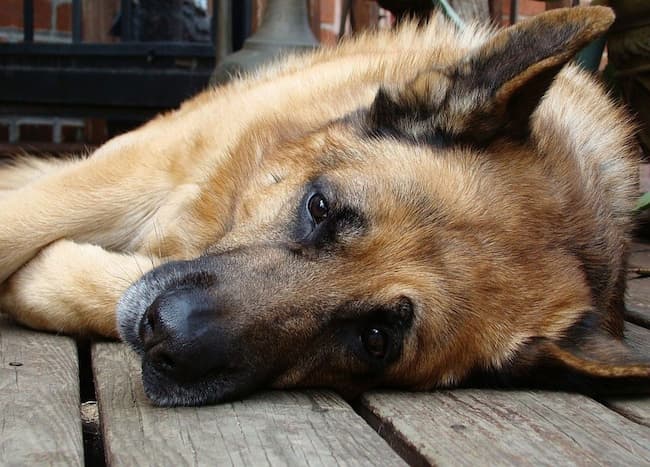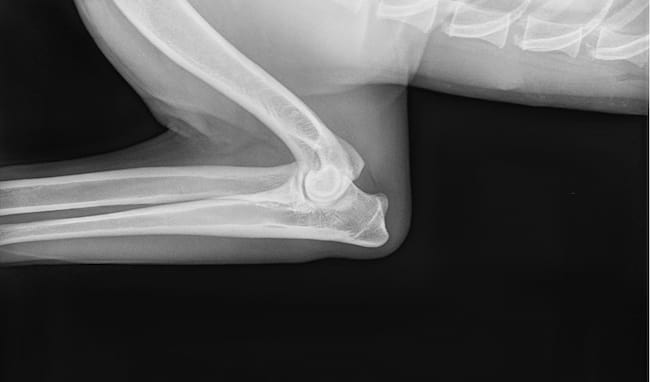German Shepherd Elbow Dysplasia: German Shepherds are one of the most popular dog breeds in the world. They are known for their intelligence, strength, and loyal personality. Unfortunately, they are also prone to a condition called elbow dysplasia.

If you are the owner of a German shepherd, then you need to be aware of the risk for elbow dysplasia. This is a common condition in German shepherds and can cause a lot of pain for your dog. In this article, we will discuss the causes, symptoms, and treatment options for German shepherd elbow dysplasia.
What is German Shepherd Elbow Dysplasia?
Elbow dysplasia is a condition that affects the elbow joint. The elbow joint is made up of three bones: the humerus, ulna, and radius. In a healthy joint, these bones fit together snugly and move smoothly when the dog bends or straightens its leg. This condition is responsible for reducing the German Shepherd lifespan.

In dogs with elbow dysplasia, the bones do not fit together properly. This can be due to a congenital defect (present at birth) or it can develop over time due to wear and tear on the joint. Elbow dysplasia is a progressive condition, which means that it will get worse over time.
There are four different types of elbow dysplasia:
- Ununited anconeal process (UAP)
- Fragmented coronoid process (FCP)
- Osteochondritis dissecans of the medial humeral condyle (OCD)
- Panosteitis
Each type of elbow dysplasia affects a different area of the elbow joint. UAP and FCP are the most common types of elbow dysplasia in German shepherds.
What Causes German Shepherd Elbow Dysplasia?
The exact cause of elbow dysplasia is unknown. However, there are several risk factors that have been associated with the condition. These include:
- Gender: Male dogs are more likely to develop elbow dysplasia than females.
- Size: Large and giant breeds are more likely to develop elbow dysplasia than small breeds.
- Rapid growth: Dogs that grow quickly are more likely to develop elbow dysplasia. This is thought to be due to the added stress on the joints during periods of rapid growth.
German shepherds are susceptible to elbow dysplasia because they are a large breed and they often grow quickly.
What are the Symptoms of Elbow Dysplasia?
The symptoms of elbow dysplasia can vary depending on the severity of the condition. In some cases, there may be no symptoms at all. In other cases, the dog may show signs of pain and lameness.
The most common symptom of elbow dysplasia is lameness in the affected leg. This can be intermittent at first, but it will eventually become constant. Other symptoms include:
- Stiffness
- Swelling
- Warmth around the elbow joint
- Muscle wasting
- Reluctance to move
If you notice any of these symptoms, then you should take your dog to the vet for an examination.
How is German Shepherd Elbow Dysplasia Diagnosed?

Elbow dysplasia is typically diagnosed based on the symptoms and physical examination. Your vet will likely recommend x-rays of the elbow joint to confirm the diagnosis. In some cases, additional tests such as an MRI or CT scan may be necessary.
How is German Shepherd Elbow Dysplasia Treated?
There is no cure for elbow dysplasia. However, there are German Shepherd elbow dysplasia treatments that can help to relieve the symptoms and slow the progression of the condition. The most common treatment is an anti-inflammatory medication. These drugs can help to reduce pain and swelling in the elbow joint.
In some cases, surgery may be necessary to remove damaged cartilage or bone. This can help to improve joint function and relieve pain. Physical therapy is often recommended after surgery to help the dog regain strength and mobility.
Also, check: How to clean German Shepherd ears
Preventing German Shepherd Elbow Dysplasia
There is no sure way to prevent elbow dysplasia. However, you can help to reduce your dog’s risk by feeding them a high-quality diet and avoiding excessive weight gain. Keeping your dog at a healthy weight will help to reduce the stress on their joints.
German shepherds are susceptible to elbow dysplasia, but there are steps that you can take to reduce their risk. Feeding them a high-quality diet and maintaining a healthy weight will help to keep their joints healthy.
Conclusion
Elbow dysplasia is a common condition in German shepherds. It is a progressive condition that can cause pain and lameness. There is no cure for elbow dysplasia, but there are treatments that can help to relieve the symptoms and slow the progression of the condition. Hope this article was helpful. Visit the German Shepherds site for more information.
